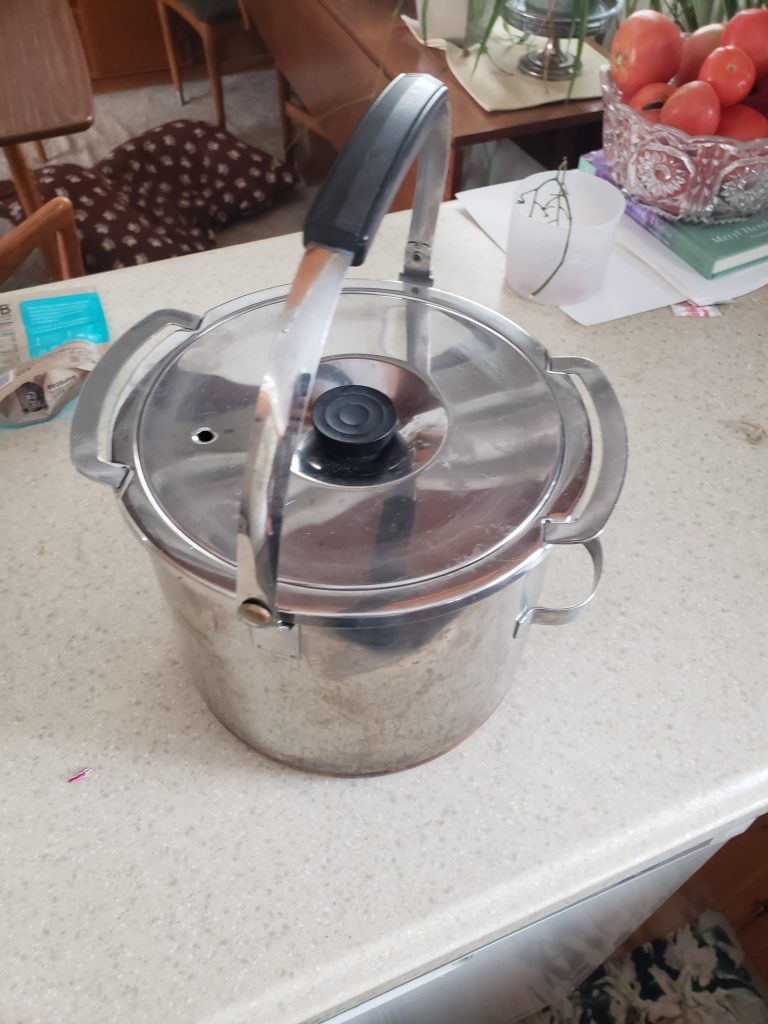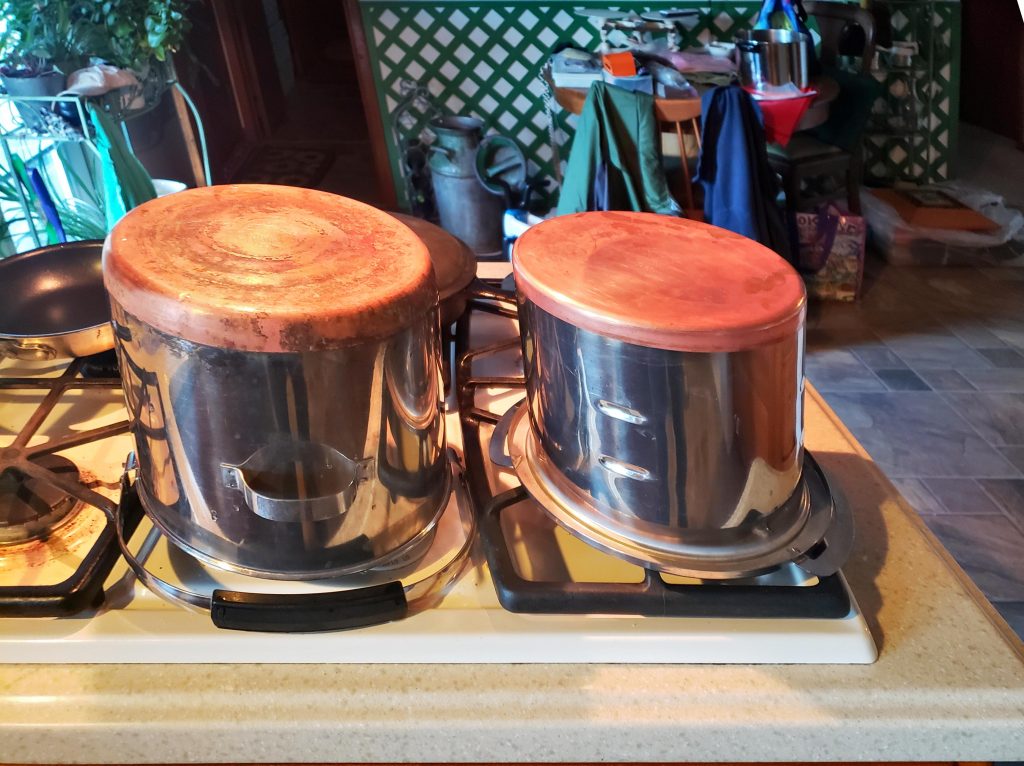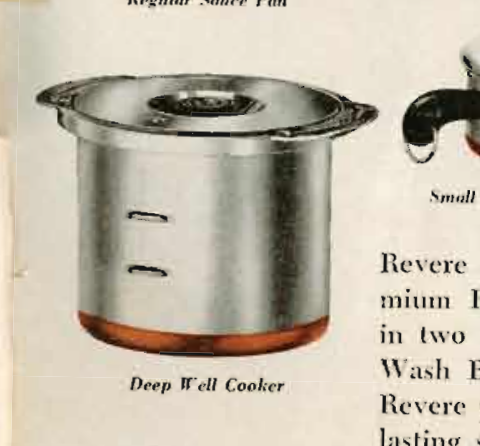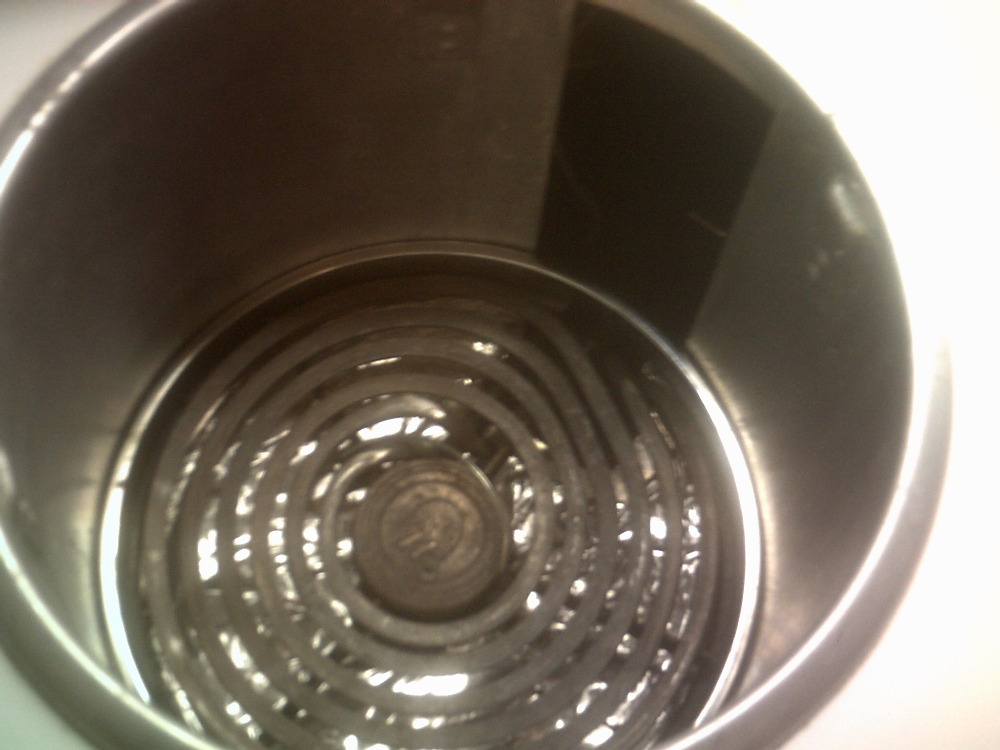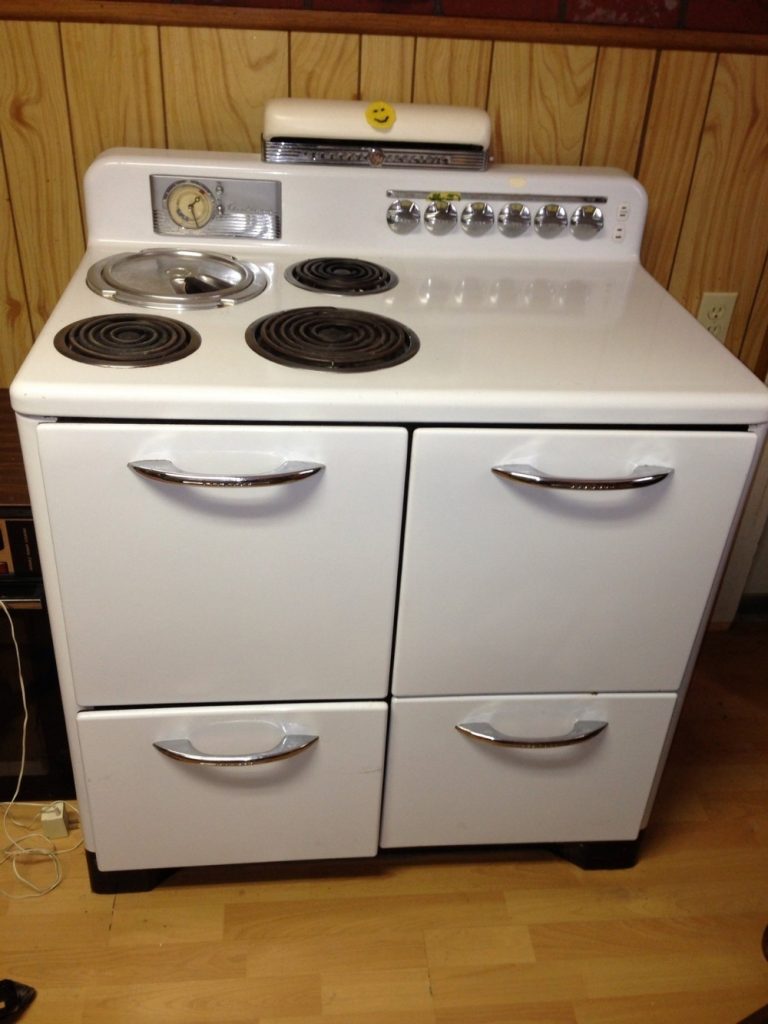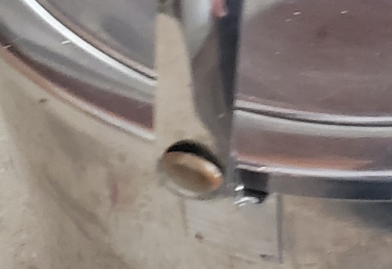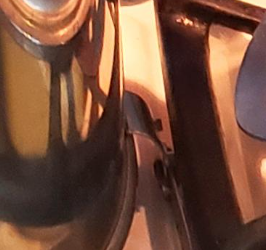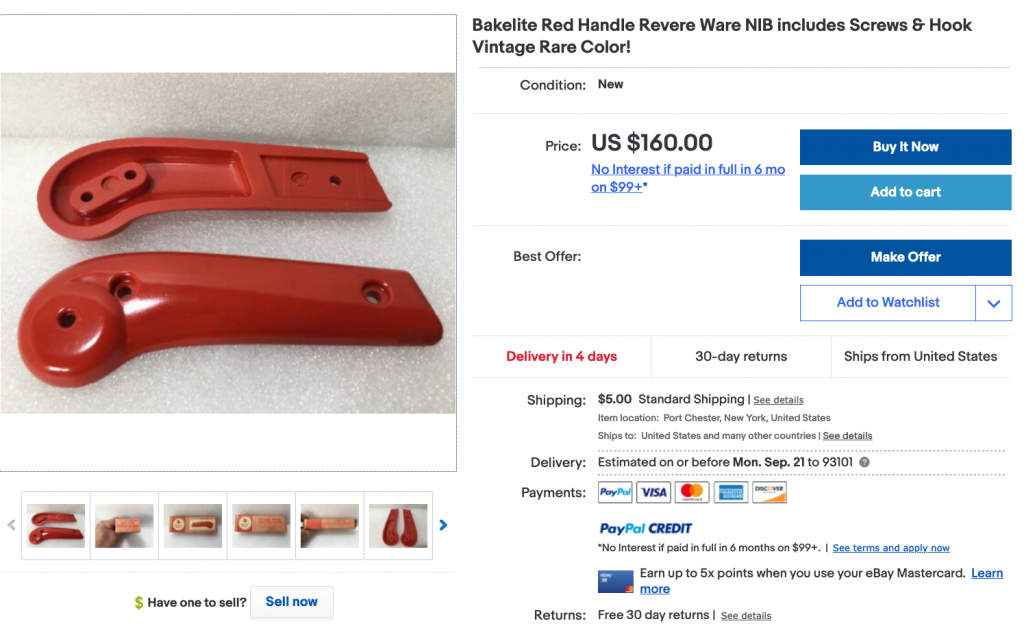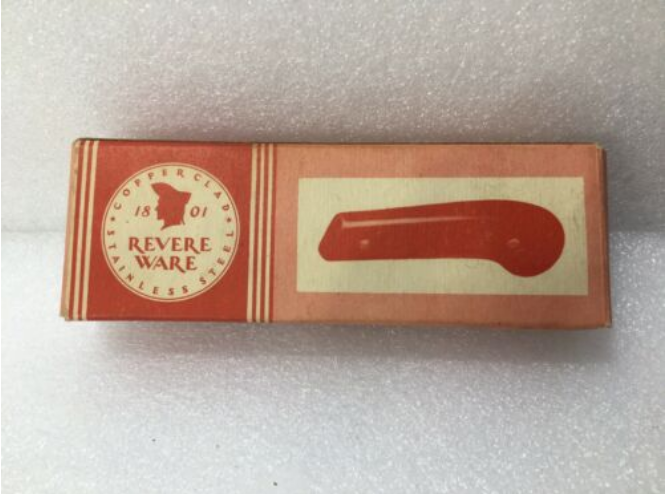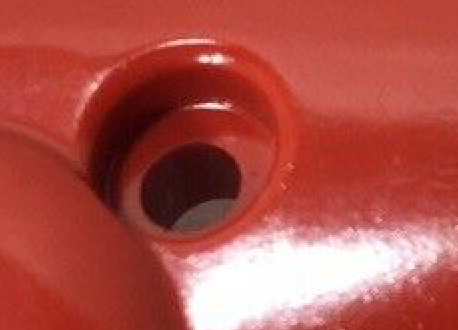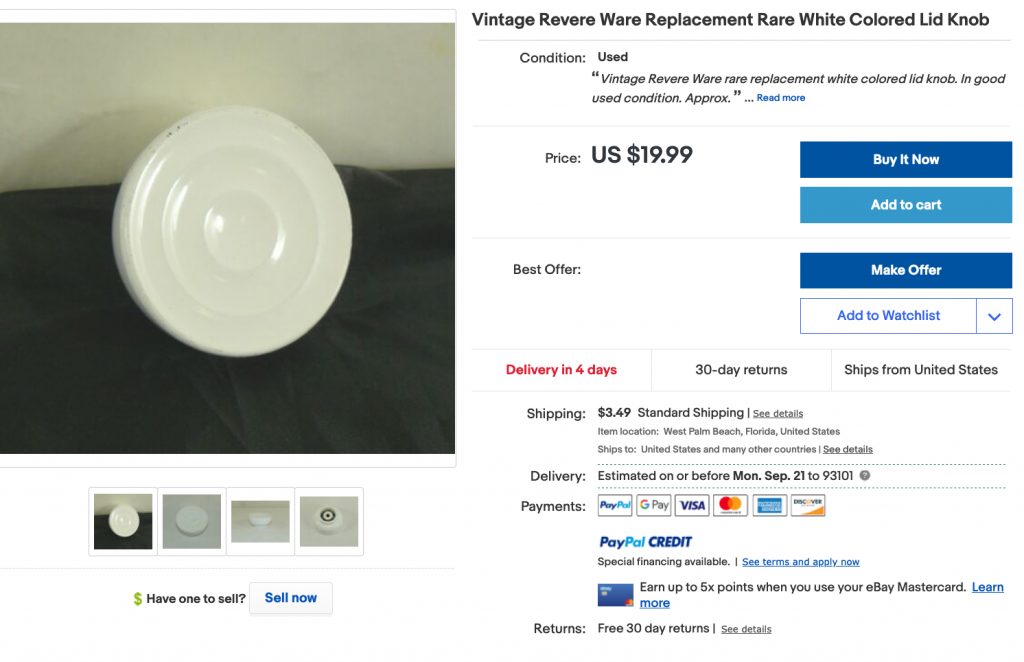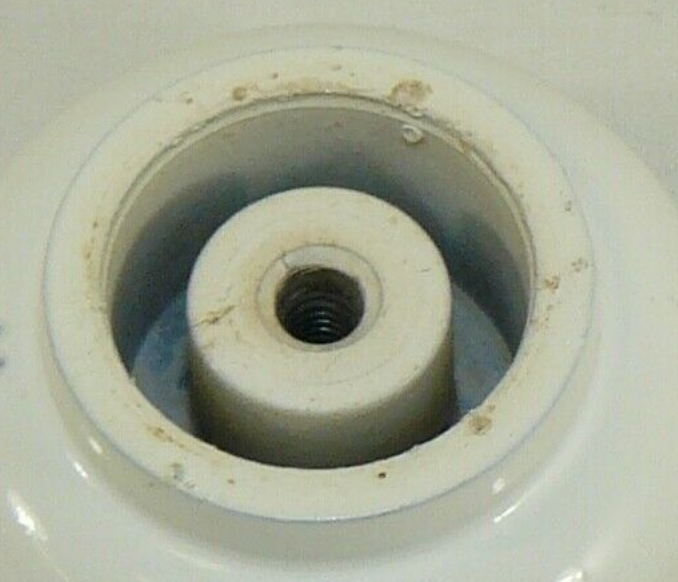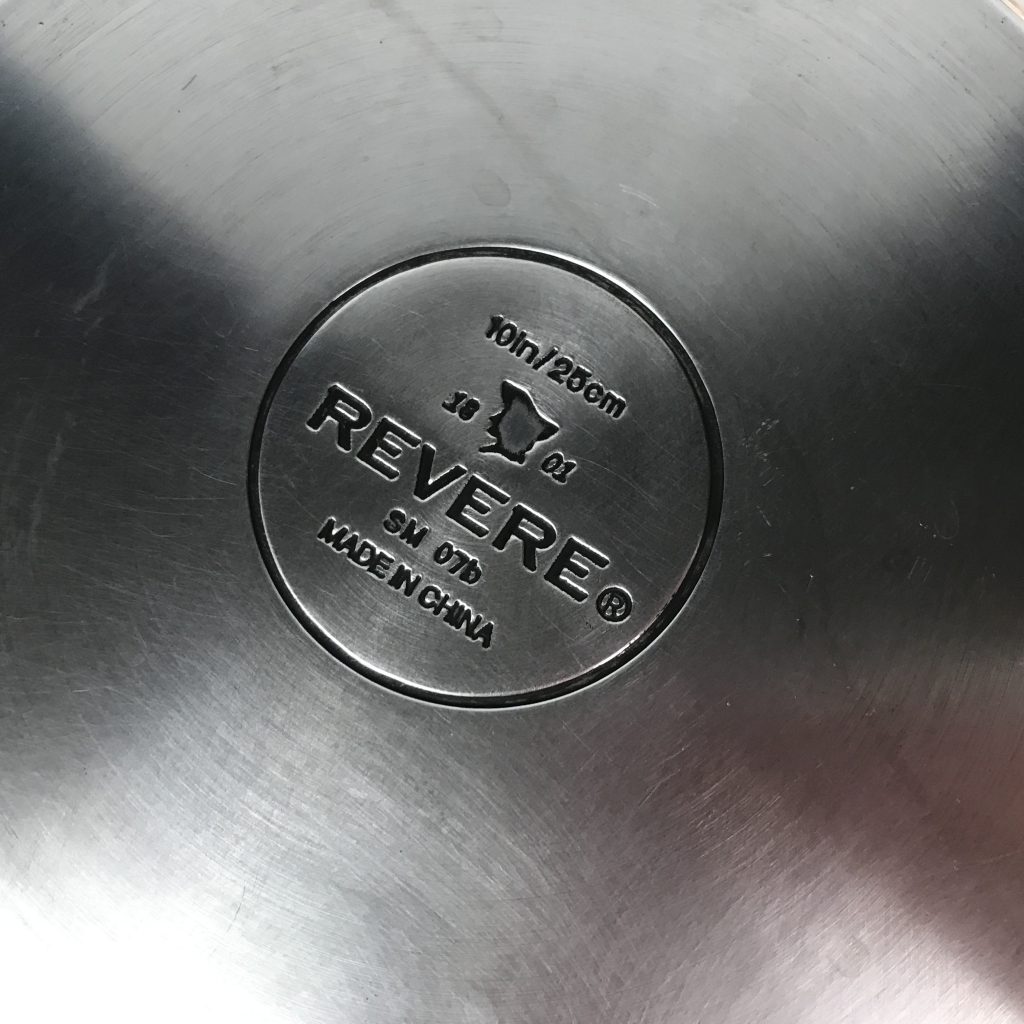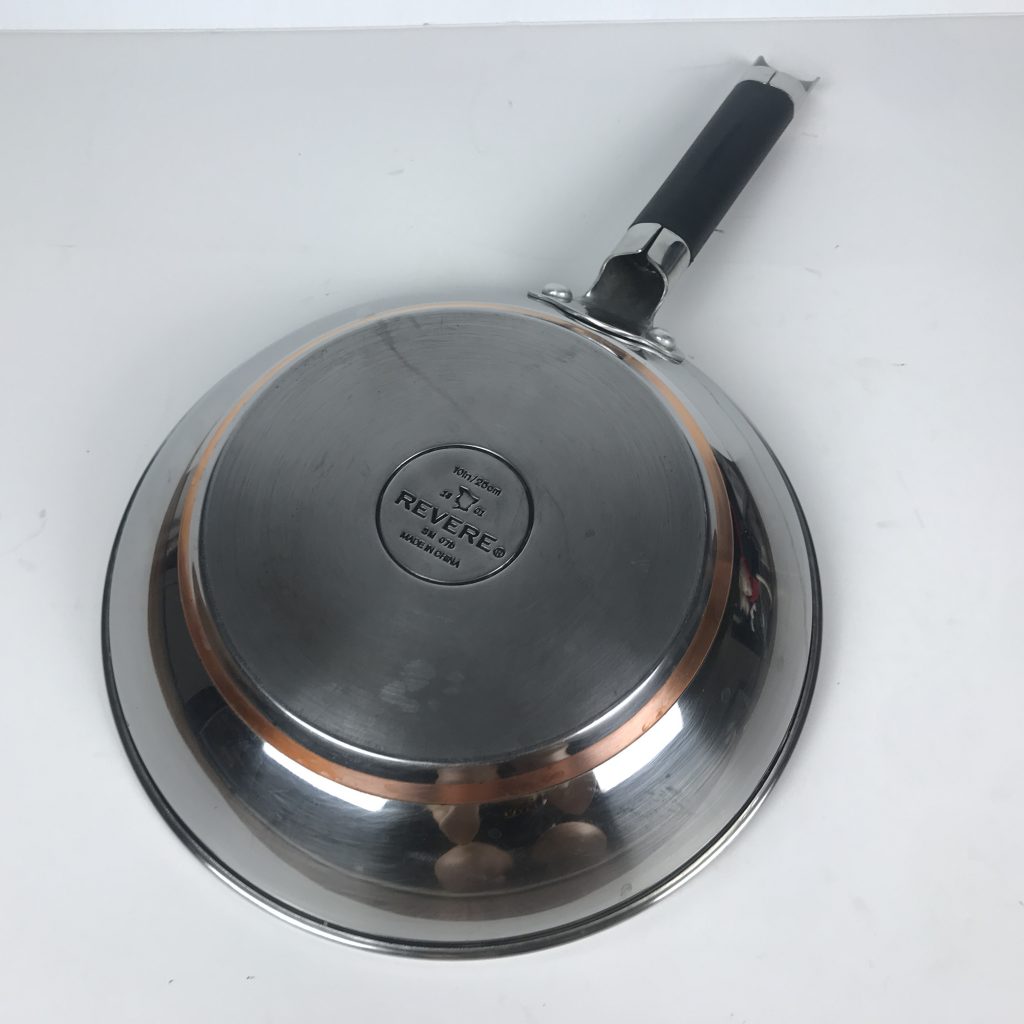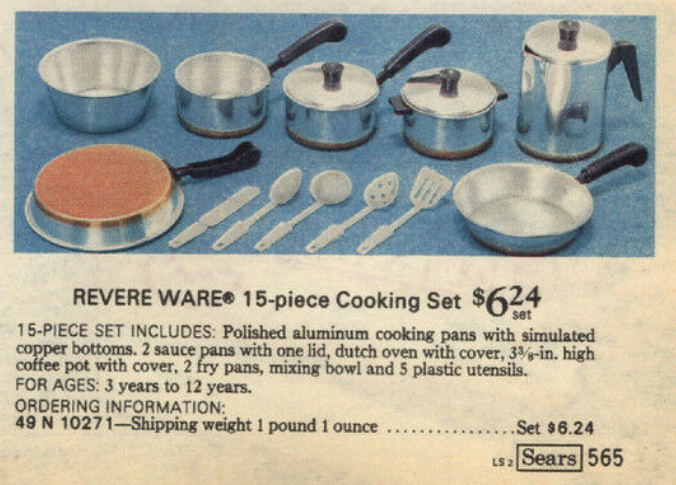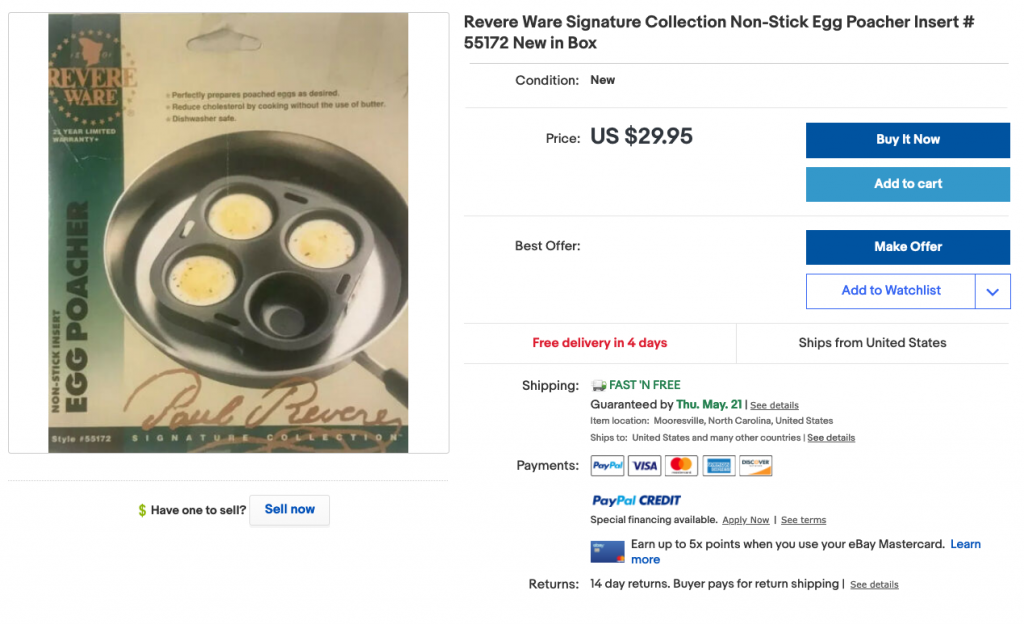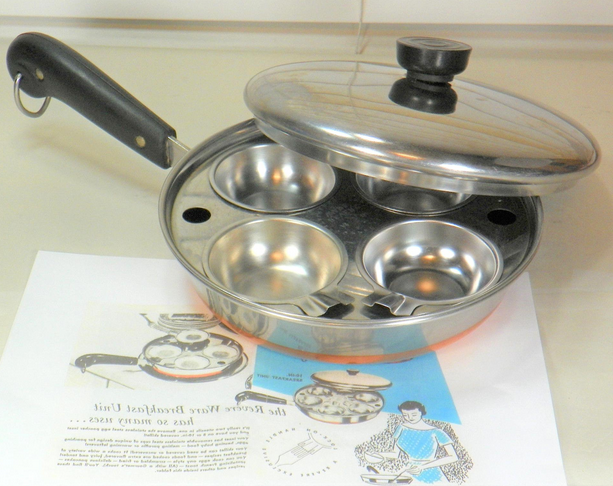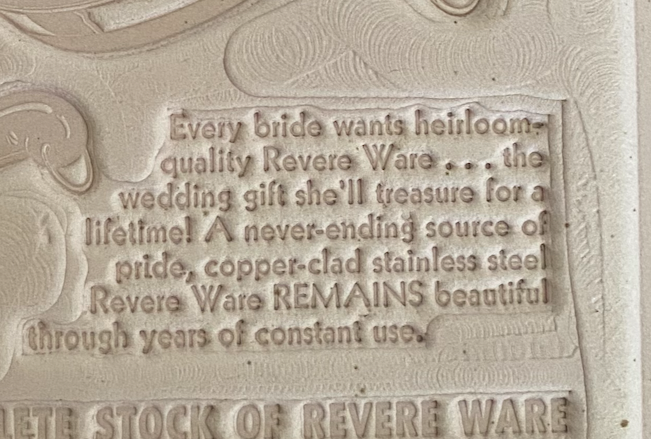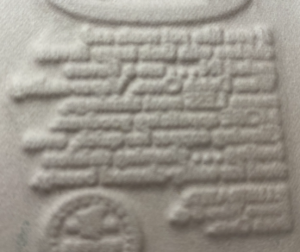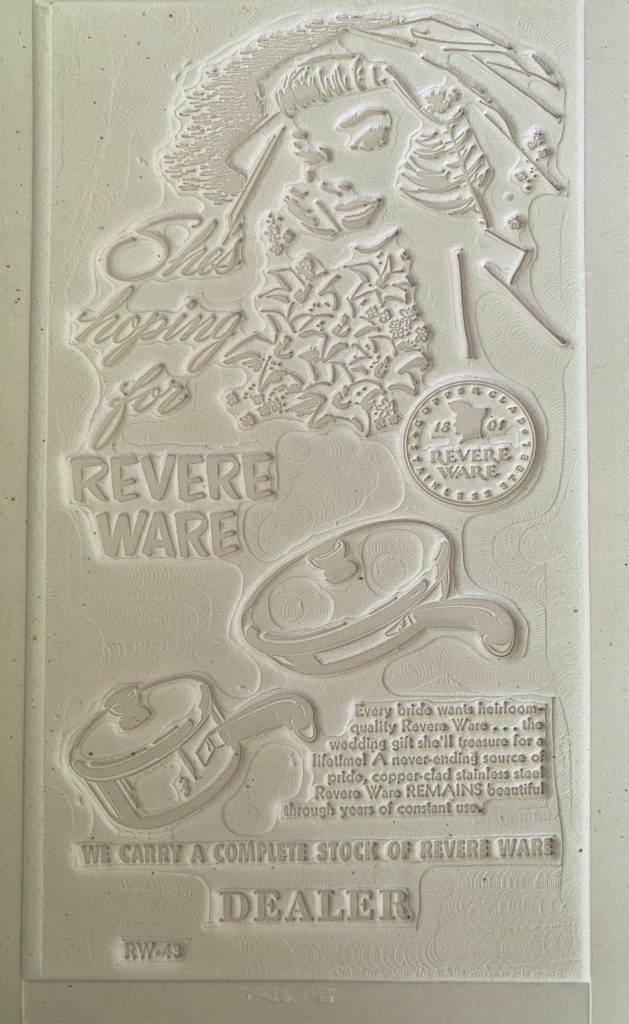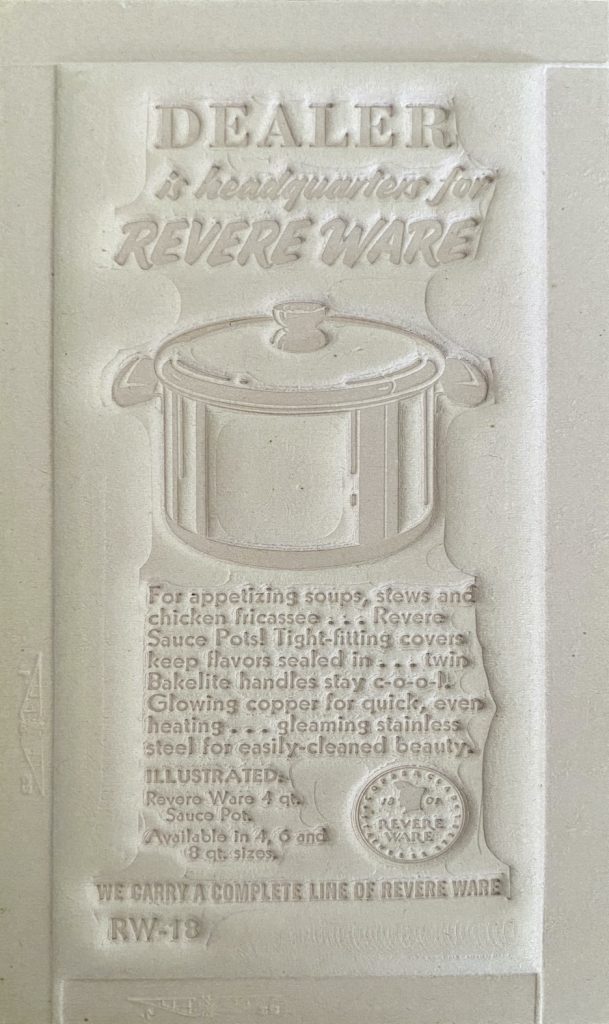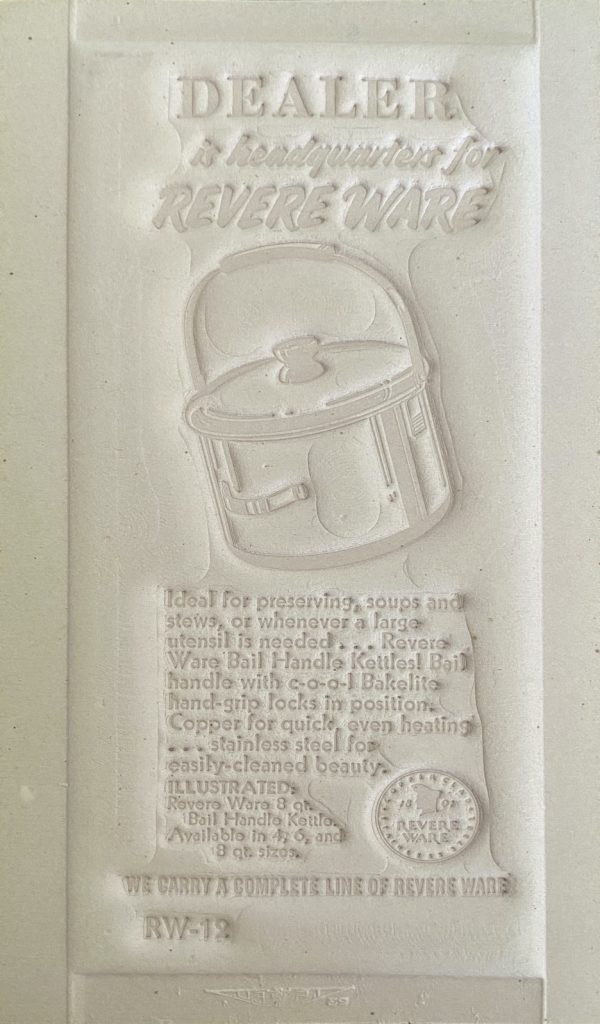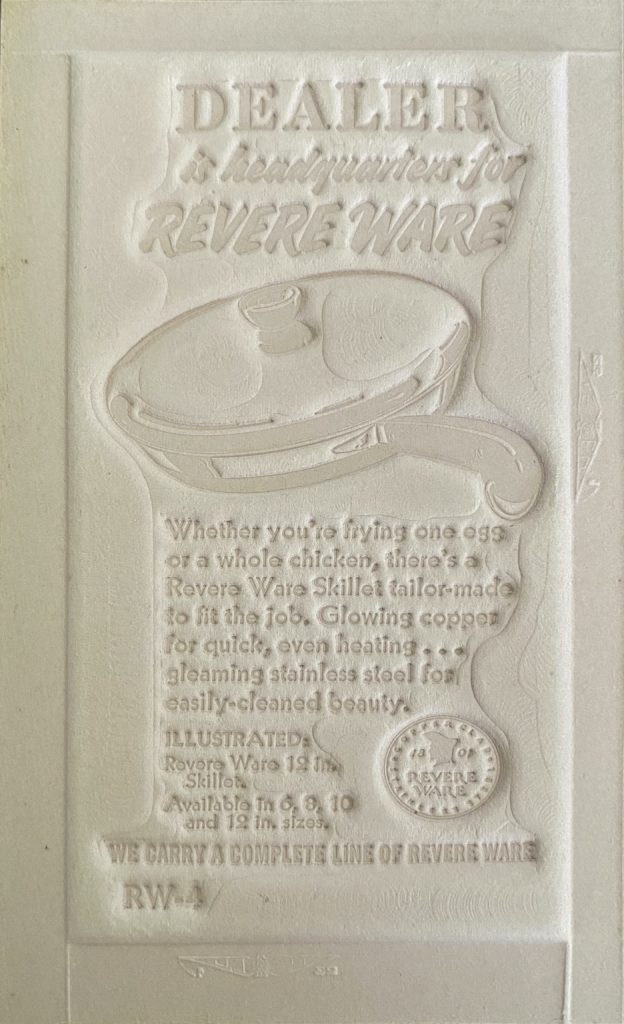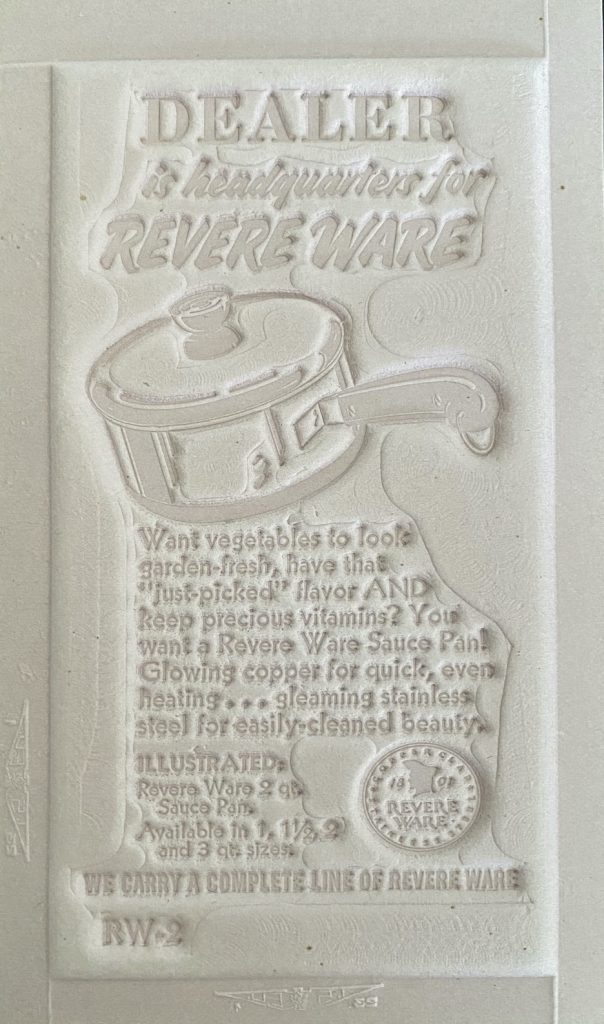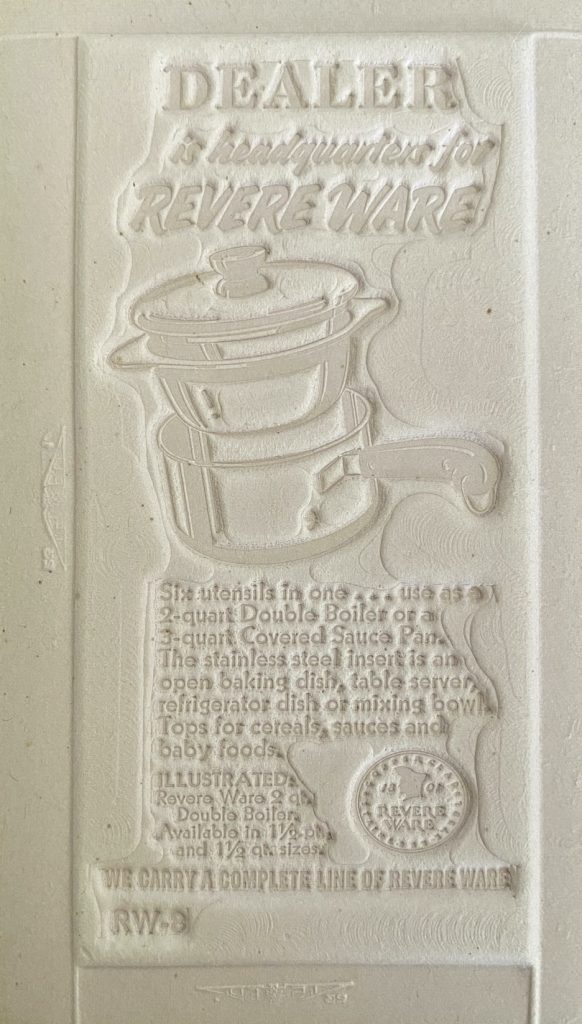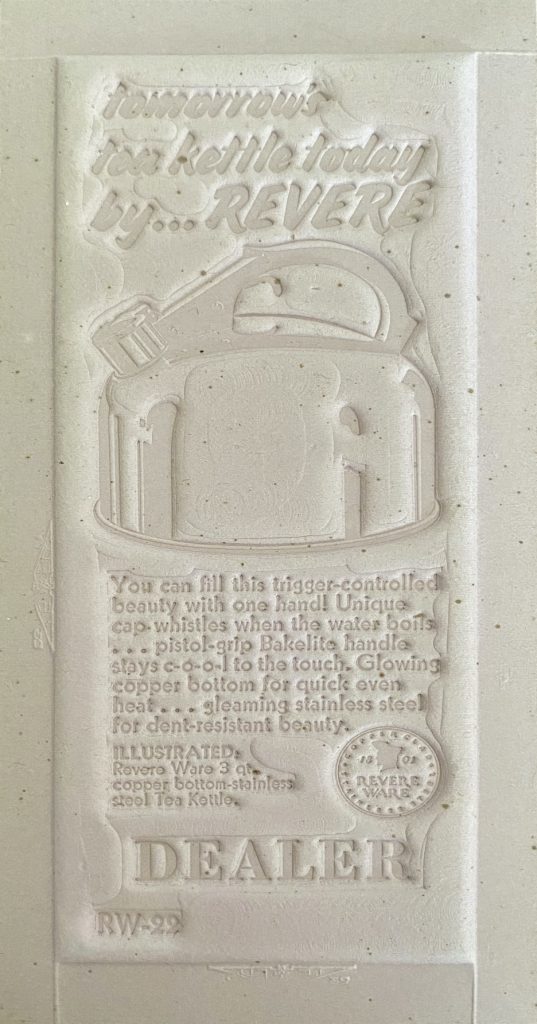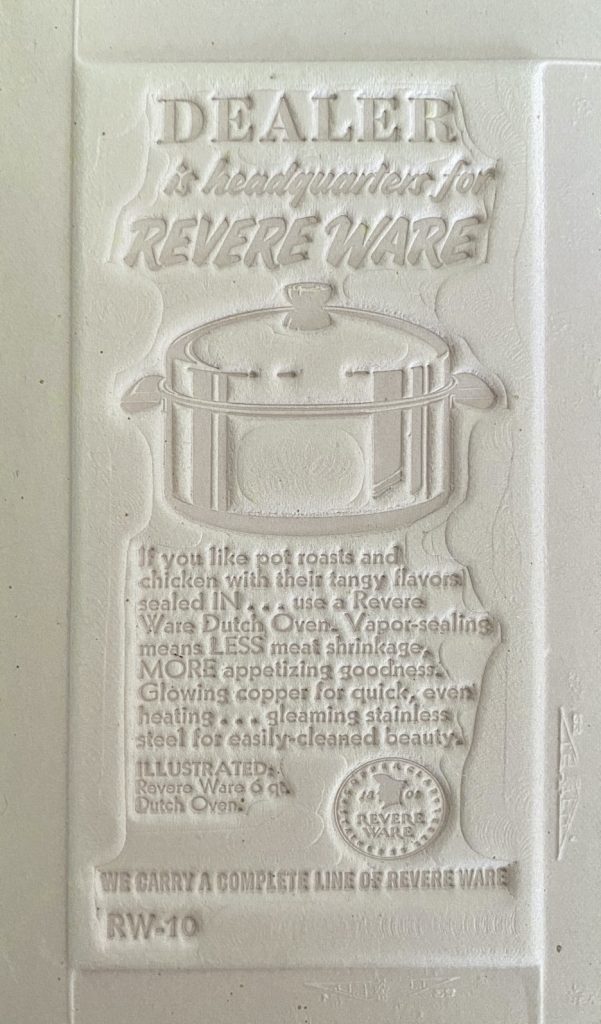A reader requested our help in identifying a Revere Ware item – a set of pans that had no handle.
My wife just found a set of three skillets that have no handles. Might you know what this product was used for and when was it in use?
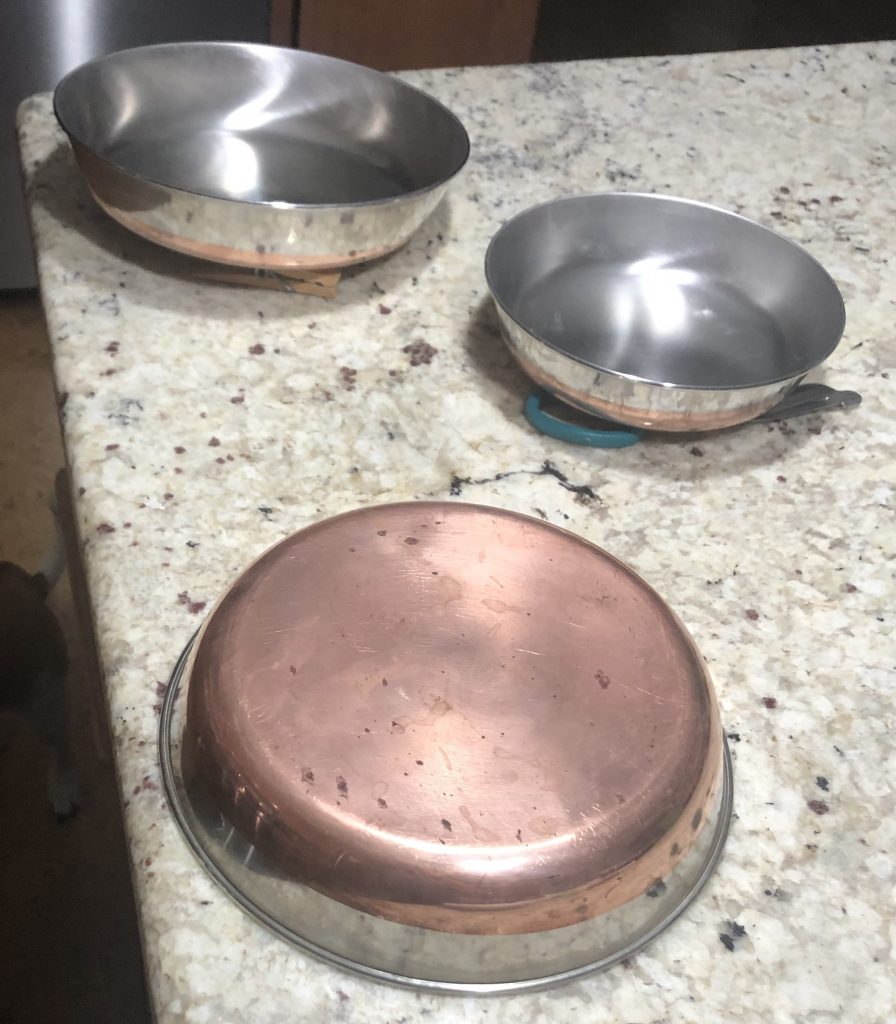
This isn’t the first time someone has asked this question. I would have assumed these were pans that lost their handles, but they don’t show any signs that a handle was ever attached.
A little internet searching however turned up a more plausible answer.
We drove a few hours away from our house to a attend a town wide sale which had several estate sales that day also. This was near Rome New York. I asked about these Revere ware pans because they were different from others I have seen. I was told that Rome, NY had a Revere Ware factory and pans that had any factory defects were often taken home by a worker and given to family and friends. Flaws many times were very minor, sometimes the stamp on the bottom of the pan was missing (These pans have no stamp on bottom). There are no handles either and there is not a place for one. Many times these pans were used in the oven, so they didn’t care if it had a handle. So these Revere Ware pans are a rare find, normally found in the towns and surrounding areas that had a Revere ware factory.

